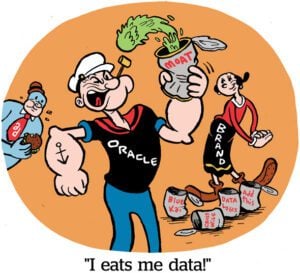The 2010s was a decade of tectonic shifts for the TV industry.
Linear TV networks can no longer avoid the digital revolution. As eyeballs shift to streaming platforms and buyers demand more automation and better measurement, new players, like Hulu and Roku, have risen as prime media sellers, while broadcasters evolve their businesses to capture shifting demand.
Over the past decade, OTT providers rose and network TV ratings crumbled. Multichannel video programming distributors (MVPDs) and broadcasters flirted with linear addressability. And media mega-mergers ruled. Comcast said it would buy NBCUniversal in December 2009, completing the deal in 2011. AT&T and Time Warner came together in 2016. And CBS and Viacom reunited in 2019.
But it’s only the beginning of an evolution that will continue through the 2020s. Below are predictions from experts in the television space about what to expect in the coming decade.
- Dave Morgan, CEO, Simulmedia
- Alison Levin, VP of Ad Sales and Strategy, Roku
- Jane Clarke, CEO and Managing Director, CIMM
- Tal Chalozin, Founder and CTO, Innovid
- Brian Wieser, Head of Global Intelligence, GroupM
“Ironically, I think the TV ad business will have a certain calmness in 2020. Audiences on linear will continue to decline, but only 3% to 4% in aggregate. With election spend, a lack of scale in OTT and the growth of direct-to-consumer marketers using TV for scaled performance, it will still be a strong year. The launch of streaming services, reorgs at the TV [networks], problems in social media and the rhetoric of the elections will be certainly noisy – but the TV ad business will chug along.
“TV, however, needs to reassert its leadership. Advertisers want to buy audiences, outcomes and predictable scaled performance – not just context and high-profile video events. TV needs to take a much more digital approach, where TV companies become the aggregators and platforms for all video ads. TV needs to either lead or be trampled.”
Alison Levin, VP of Ad Sales & Strategy, Roku
“With significant innovation and adaptation of new tools to measure reach, frequency and performance across linear and OTT, marketers will have the insights they need to shift budgets out of linear TV into OTT, to maximize overall reach and performance.
“In 2020 we will also see a continued drop in linear ratings and sharp increases in scatter pricing, which ultimately will accelerate the shift for marketers to follow consumers to OTT.”
Jane Clarke, CEO and managing director, CIMM
“The national networks are going to lean much more into addressable TV. The networks are using their own promotional inventory to dip their toe into addressability with pay TV operators. A lot of smaller cable channels are experimenting there as well.
“The big challenge is, addressability breaks panel measurement. Nielsen is rapidly trying to fix that before these initiatives get very big. They’ve proposed several solutions, but I don’t think anybody is that happy with them. As project OAR and Nielsen’s own initiatives move past pilot, that issue is the top one to be solved.”
Tal Chalozin, Founder and CTO, Innovid
“Content was the differentiator [for streaming services]. Now ad experience will become a differentiator. It will change from an innovation to a necessity because of mass competition.
“AVOD is an extremely competitive market. There are a lot of apps and a very small percentage are installed. If you want to be one of four, you need to be more respectful to the user, so there will be a lot of emphasis on lower ad load and more personalization. Competition will be the biggest driver for innovation. It just takes one very large player to say, ‘Come to my service and it will feel different.’”
Brian Wieser, Head of Global Intelligence, GroupM
“The television industry will remain strong in 2020, at least subjectively. Investment in programming and quality continues to rise, aided by new streaming services and efforts of broadcasters to keep up. There are no signs of this trend reversing any time soon.
“But this also has commercial implications: Spending on programming by consumers is not rising by much at all, and neither is advertising (beyond media owners that benefit from political advertising, which should help drive substantial growth in local TV, at least).
“Even if the overall advertising market won’t expand, there will be pockets of growth, especially among sellers whose audience shares are growing. Still, the television industry’s overall health should not be measured so directly or traditionally. It has become a key supporting pillar of the lucrative high-speed data business for MVPDs, as well as Amazon’s ecommerce business by encouraging consumers to become Prime subscribers.”











